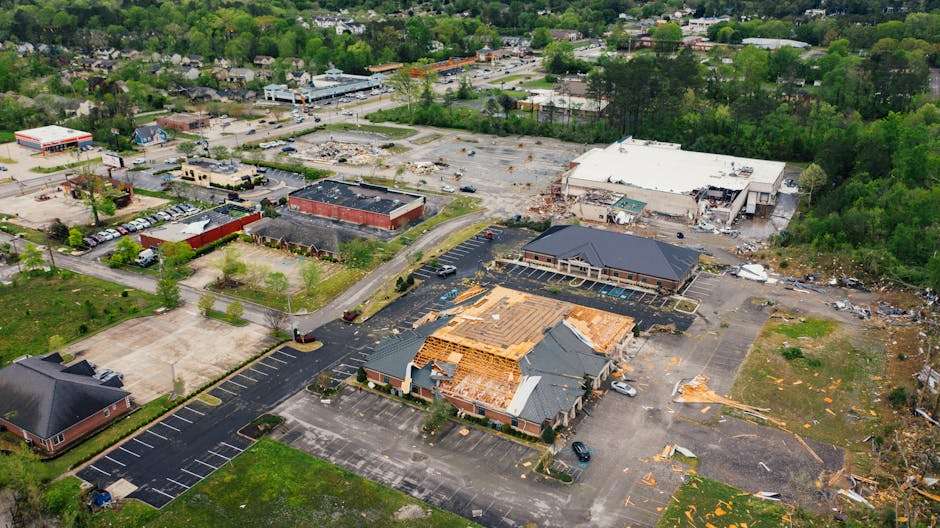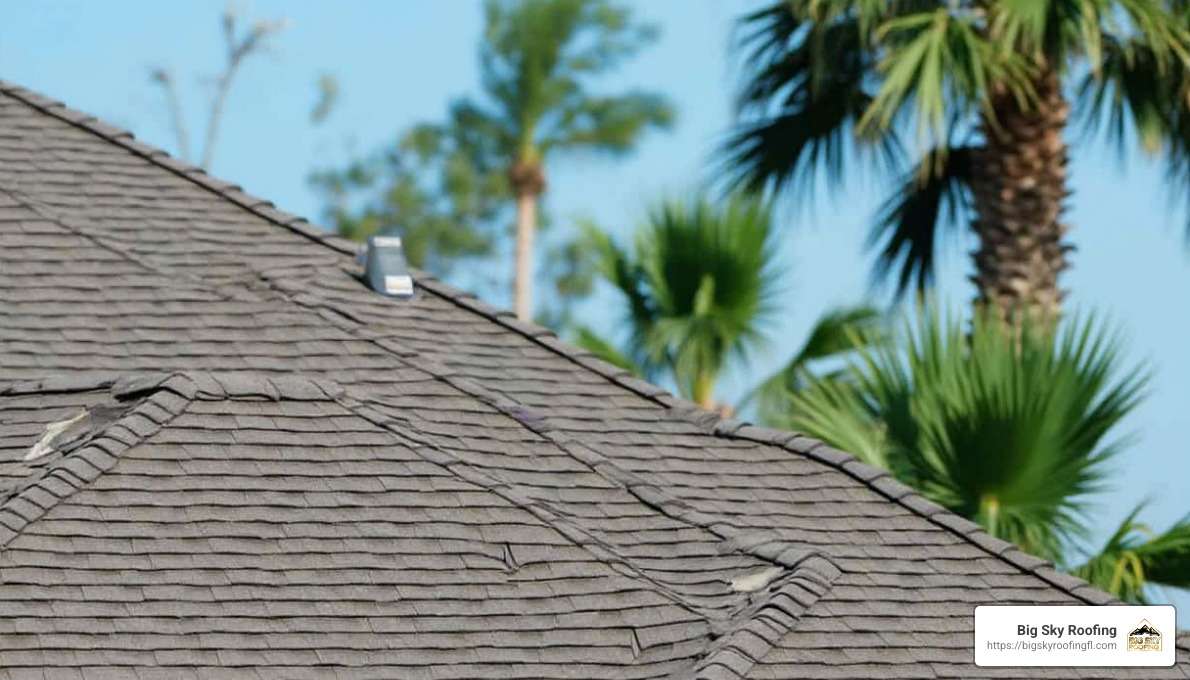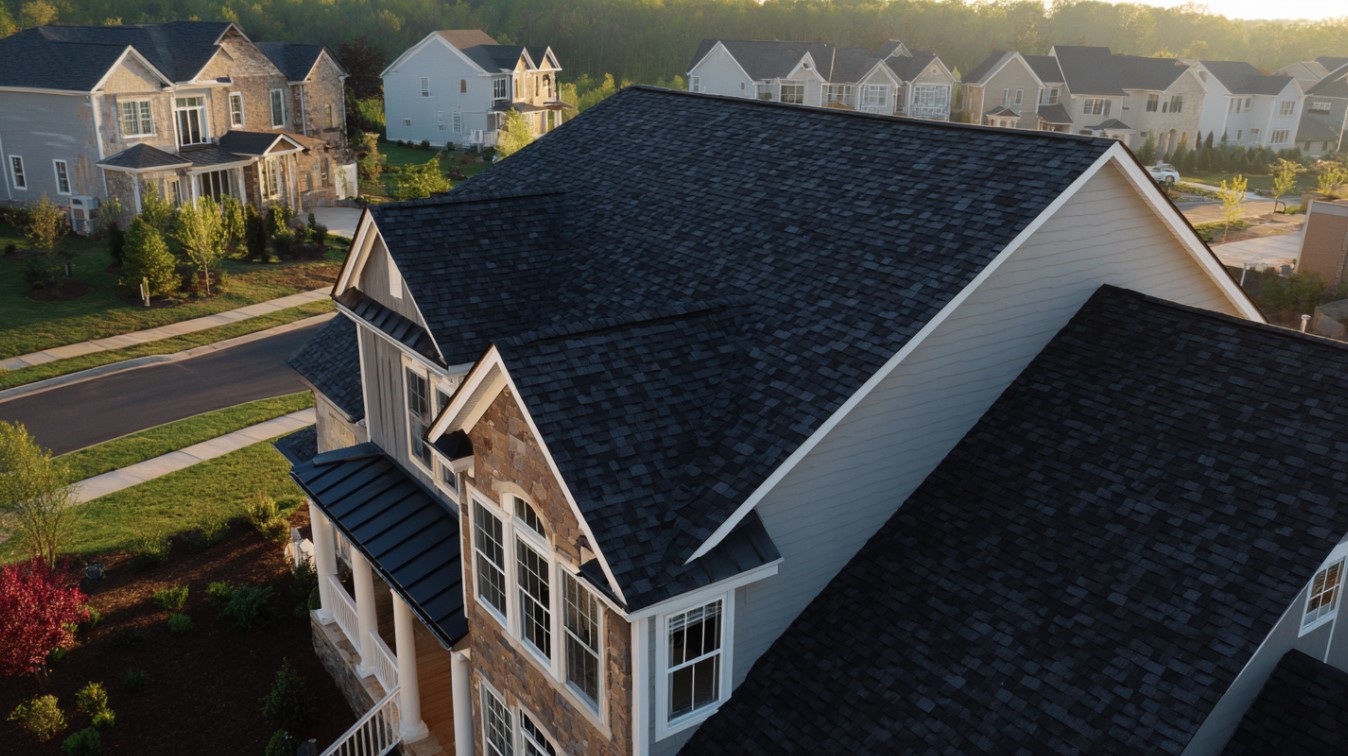The Ultimate Guide to Roof Replacement Costs in Florida
•
Written By
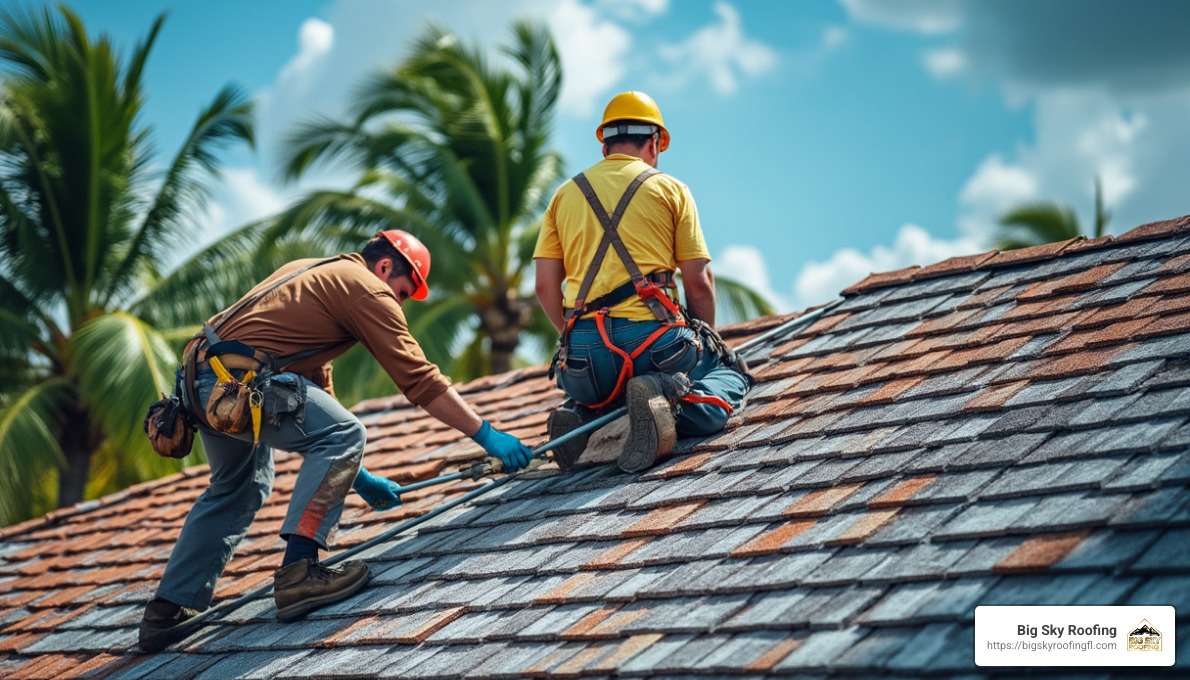
Roof replacement Florida is a hot topic for homeowners, especially due to the state’s extreme weather conditions. With hurricanes, heavy rains, and intense sunshine, roofs in Florida face significant wear and tear. This can lead to frequent and costly repairs or full replacements, posing a serious financial burden for many.
Quick Overview:
– Common Challenges: Hurricanes, high winds, intense sun
– Cost Factors: Material choice, labor, roof size
– Insurance Help: Often covers hurricane and storm damage
– Assistance Programs: Federal, state, and community options available
For homeowners in Sumter, Lake, Citrus, Hernando, Orange, and Marion counties, maintaining the roof’s integrity is crucial. It protects the home, ensures safety, and maintains property value. Exploring reliable solutions like insurance policies and government assistance can significantly ease the financial load of a new roof.


Understanding Roof Replacement Costs in Florida
When it comes to roof replacement Florida, understanding the cost factors is key. The type of roofing material, labor costs, and the overall size of your roof are the primary elements that determine the price. Let’s break down these components and see how they apply to different roofing materials.
Asphalt Shingles
Asphalt shingles are the most common roofing material in Florida, and for good reason. They are affordable and provide decent durability for their price range. Typically, you can expect to pay between $3 and $5 per square foot for asphalt shingles. This makes them a budget-friendly option, especially for smaller roofs.
However, while asphalt shingles are cost-effective, they may not be the best choice for Florida’s harsh climate. They are vulnerable to high winds and intense sunlight, which can reduce their lifespan.
Metal Roofing
Metal roofs are gaining popularity due to their energy efficiency and long lifespan. They reflect sunlight, which can help lower your cooling costs—a big plus in Florida’s hot climate. Metal roofing options include materials like aluminum, steel, and copper.
The upfront costs for metal roofs are higher than asphalt, ranging from $7 to $12 per square foot. But, they offer long-term savings on energy bills and can last 40 to 70 years, which makes them a worthwhile investment for many homeowners.
Tile Roofing
Concrete and clay tiles are renowned for their longevity and ability to withstand Florida’s extreme weather. These tiles can last over 50 years, making them a durable choice for those looking to invest in a long-term solution.
The cost for tile roofing is on the higher end, generally between $10 and $20 per square foot. While the initial investment is significant, the durability and minimal maintenance needs make them a popular choice in areas like Sumter, Lake, Citrus, Hernando, Orange, and Marion counties.
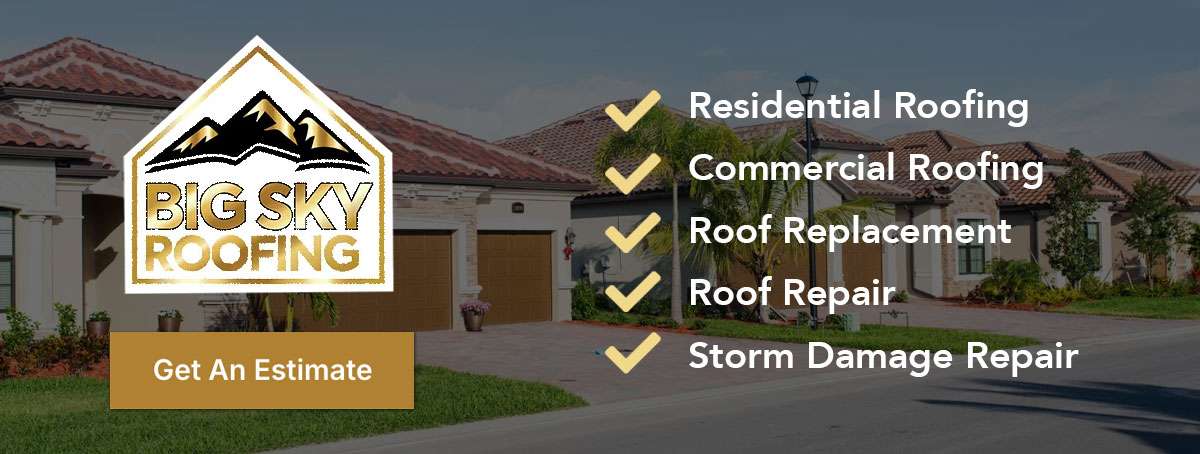


Labor Costs also play a significant role in the overall expense. The complexity of the roof design, such as its pitch and accessibility, can increase labor costs. It’s crucial to get quotes from multiple contractors to ensure competitive pricing.
By understanding these cost factors and material options, homeowners can make informed decisions about their roofing needs. Whether you opt for the affordability of asphalt shingles, the energy efficiency of metal, or the longevity of tile, each choice has its own set of benefits and trade-offs.
Next, we’ll dig into the Legal and Insurance Considerations that are crucial when planning a roof replacement in Florida.
Legal and Insurance Considerations
When planning a roof replacement in Florida, steer the legal and insurance landscape effectively. These considerations ensure your project complies with state regulations and maximizes potential insurance benefits.
Florida’s 25% Roof Replacement Rule
In Florida, the Building Code is strict to ensure homes withstand extreme weather conditions, like hurricanes. One specific rule to note is the 25% Roof Replacement Rule. If more than 25% of your roof is damaged and needs repair within a 12-month period, the entire roof must be replaced to comply with the building code. This rule helps maintain the structural integrity and safety of homes in regions prone to severe weather.
Compliance with this rule is non-negotiable. It ensures that your roof can handle future storms, protecting both your property and the community. Always work with licensed contractors familiar with Florida’s building codes to ensure your project meets all necessary requirements.
Homeowners Insurance Coverage
Insurance coverage is a critical component of managing the costs associated with roof replacement. Most homeowner insurance policies in Florida cover roof damage caused by specific perils such as hurricanes, windstorms, and hail. Understanding what your policy covers can significantly impact your out-of-pocket expenses.
- Covered Perils: Check if your policy covers damage from common Florida weather events. If your roof has been damaged by a covered peril, your insurance might cover the full or partial replacement costs.
- Full Replacement vs. Deductibles: Be aware of your policy’s deductible. It’s the amount you need to pay before insurance kicks in. Also, some policies may only cover the depreciated value of your roof, not the full replacement cost.
- Important Tip: Regularly review your policy and speak with your insurance agent to understand the specifics of your coverage. This ensures you’re prepared when damage occurs and helps avoid surprises during the claim process.


Navigating the legal and insurance aspects of roof replacement can be complex. By understanding Florida’s building codes and your insurance coverage, you can make informed decisions that protect your investment.
Next, we’ll explore Free and Affordable Roof Replacement Options available to Florida homeowners.
Free and Affordable Roof Replacement Options
Roof replacement can be a significant expense, but there are programs available to help Florida homeowners manage these costs. Let’s explore some federal and state assistance programs, as well as non-profit and community-based programs that can provide financial relief.
Federal and State Assistance Programs
FEMA Grants: After a natural disaster, the Federal Emergency Management Agency (FEMA) offers grants to help cover emergency repairs, including roof replacements. To qualify, eligibility is based on income and the extent of damage caused by the disaster. These grants can be a lifeline for many families facing unexpected repair costs.
State-Specific Programs: Florida has its own state-level disaster assistance programs. When a disaster is declared, these programs can provide funds to repair and rebuild homes, including replacing damaged roofs. Applying quickly is crucial, as funds may be limited.
Application Process:
1. Assess the Damage: Obtain a professional inspection to document the roof damage.
2. Gather Documentation: Prepare proof of ownership, damage reports, and income verification.
3. Submit Your Application: Visit the relevant agency’s website or office to apply.
4. Follow Up: Regularly check the status of your application to ensure timely processing.
Non-Profit and Community-Based Programs
Habitat for Humanity: This organization sometimes assists with critical home repairs, including roof replacements, especially for low-income families. They focus on providing safe and affordable housing solutions.
Community Development Block Grants (CDBG): These grants, administered at the local level, can fund necessary home repairs like roof replacements. They often prioritize low-income families, elderly homeowners, and individuals with disabilities.
Eligibility Criteria:
– Income Verification: Programs typically require proof of income to ensure aid reaches those most in need.
– Priority Groups: Many programs prioritize low-income families, seniors, and disabled individuals.
These assistance programs can significantly reduce the financial burden of a roof replacement. By understanding the eligibility criteria and application process, homeowners in Florida can access the support they need to maintain a safe and secure home.
Next, we’ll address some frequently asked questions about roof replacement in Florida.
Frequently Asked Questions about Roof Replacement in Florida
How much does it cost to replace a roof in Florida?
The cost of a roof replacement in Florida varies widely, typically ranging from $5,000 to $15,000. Several factors influence this price:
- Roof Size: Larger roofs require more materials and labor, increasing costs.
- Material Choice: Asphalt shingles are more affordable, while metal and tile roofs are pricier due to their durability and longevity.
- Roof Pitch: Steeper roofs take more time and safety equipment, which can raise labor costs.
- Location: Costs can differ across counties like Sumter, Lake, Citrus, Hernando, Orange, and Marion due to local labor rates and material availability.
For a precise estimate, it’s best to contact a certified roofing contractor in your area.
How can I get insurance to pay for roof replacement in Florida?
To get your insurance to cover a roof replacement, follow these steps:
- Review Your Policy: Check if your policy covers roof damage from specific perils like hurricanes or windstorms.
- Document the Damage: Take photos and get a professional inspection report.
- File a Claim: Contact your insurance company promptly after the damage occurs.
- Meet the Deductible: Be aware of your policy’s deductible, as you’ll need to cover this amount before insurance kicks in.
- Work with the Adjuster: Cooperate with the insurance adjuster to assess the damage and determine the coverage.
Regular maintenance and timely repairs can improve your chances of a successful claim.
What are the best roofing materials for Florida’s climate?
Florida’s climate is harsh on roofs, with intense sun, heavy rain, and hurricanes. Here are some of the best materials:
- Asphalt Shingles: Affordable and popular, these are suitable for many homes but may not last as long as other materials in Florida’s climate.
- Metal Roofing: Known for durability and energy efficiency, metal roofs can withstand high winds and reflect heat, reducing cooling costs.
- Tile Roofing: Both concrete and clay tiles offer longevity and excellent protection against the elements, though they require a reinforced structure due to their weight.
Each material has its pros and cons, so consider your budget, aesthetic preferences, and specific needs when choosing the best option for your home.
Conclusion
When it comes to roof replacement in Florida, choosing the right contractor is crucial. At Big Sky Roofing, we pride ourselves on providing superior craftsmanship and outstanding customer service. With over 25 years of experience, we’re committed to helping homeowners across Florida, especially in counties like Sumter, Lake, Citrus, Hernando, Orange, and Marion, steer the complexities of roof replacement.
Our team is fully licensed and insured, ensuring that every project is completed to the highest standards. We understand the unique challenges posed by Florida’s climate, and we tailor our services to meet these needs effectively. Whether it’s the intense sun, heavy rains, or hurricane-force winds, we have the expertise to protect your home.
We offer free estimates to help you understand the potential costs and benefits of different roofing options. This transparency allows you to make informed decisions without any upfront financial commitments. Our goal is to provide you with a roof that not only improves your home’s appearance but also stands the test of time.
If you’re considering a roof replacement, contact us today to learn more about how we can assist you. Let Big Sky Roofing be your trusted partner in securing a safe and durable roof for your home.

